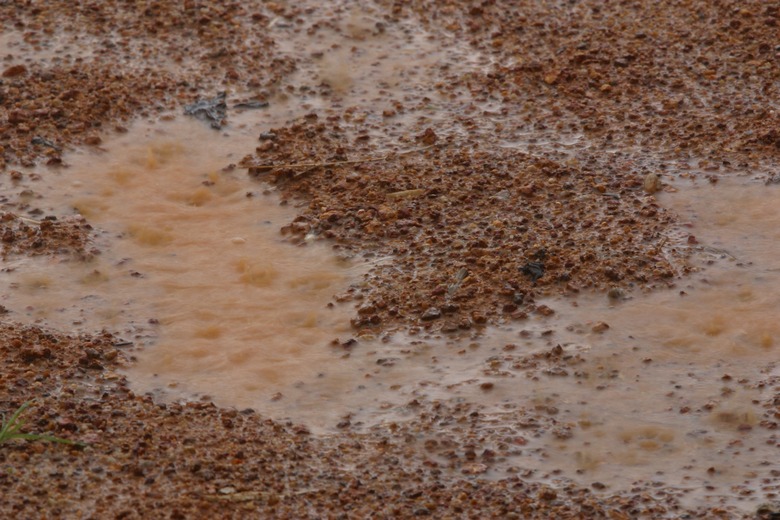Lilly Pilly Diseases
Lilly Pilly (Syzygium or Acmena spp.) is an Australian native that grows politely in small yards, taking up minimal space yet providing both good looks and shade. Only 10 to 25 feet tall with an upright or slightly weeping canopy, Lilly Pilly's branches rarely interfere with overhead lines. Roots pose only a moderate risk to underground utilities when properly spaced, according to the Urban Forest Ecosystems Institute website. An evergreen, Lilly Pilly grows best in U.S. Department of Agriculture plant hardiness zones 9 through 11, depending on species, and needs full sun and moist soil. A hearty, generally easy-care tree, lilly pilly can suffer from phytophthora disease, root rot and rust.
Lilly Pilly (Syzygium or Acmena spp.) is an Australian native that grows politely in small yards, taking up minimal space yet providing both good looks and shade. Only 10 to 25 feet tall with an upright or slightly weeping canopy, Lilly Pilly's branches rarely interfere with overhead lines. Roots pose only a moderate risk to underground utilities when properly spaced, according to the Urban Forest Ecosystems Institute website. An evergreen, Lilly Pilly grows best in U.S. Department of Agriculture plant hardiness zones 9 through 11, depending on species, and needs full sun and moist soil. A hearty, generally easy-care tree, lilly pilly can suffer from phytophthora disease, root rot and rust.
Phytophthora Disease
If the lilly pilly's foliage appears to wilt when warm weather arrives, or appears water stressed, turns colors or develops a generally dull appearance, the tree may be suffering from Phytophthora crown and root rot. Excessively wet soil around the roots can foster growth of this soil-borne pathogen, which can eventually kill young trees. Dark areas may develop around the base of the trunk, and if you cut away a small part of bark in this area, reddish-brown areas of disease may be clearly seen.
- Lilly Pilly (Syzygium or Acmena spp.)
- If the lilly pilly's foliage appears to wilt when warm weather arrives, or appears water stressed, turns colors or develops a generally dull appearance, the tree may be suffering from Phytophthora crown and root rot.
Root Rots
Often, when the roots of trees begin to rot, it is because of too much water. Poor drainage, overwatering or excessive rainfall can all cause moisture to envelop the roots for too long, causing them to swell as they take in more water than they can effectively handle. Oedema occurs when the tree's circulatory system sends excess water to the foliage. This causes small, blisterlike eruptions on the undersides of the lilly pilly's leaves that eventually burst, leaving spots of dead cells that may be white to brown and corklike. The leaves may eventually yellow and fall off. Overwatering and poor drainage can be a deadly combination in the yard. Although lilly pilly grows best in moist soil, the soil should be well-drained and not stay consistently wet. Roots suffocate and die, and the tree's growth may be stunted and the leaves may yellow, or the tree may develop oedema.
- Often, when the roots of trees begin to rot, it is because of too much water.
- This causes small, blisterlike eruptions on the undersides of the lilly pilly's leaves that eventually burst, leaving spots of dead cells that may be white to brown and corklike.
Myrtle Rust
Myrtle rust, also known as guava rust, is caused by the pathogen Puccinia psidii. This invasive disease first appeared in Florida in 1977, and is slowly spreading outward. Myrtle rust favors plants in the Myrtacaea family like Syzygium, causing distorted growth with clusters of bright yellow to rust-colored pustules. The disease can attack flowers and fruits as well as leaves, and may cause flowers to fail, which means the tree will not produce fruit. Twig dieback can also occur. Cool temperatures and high humidity help myrtle rust survive, but once the lilly pilly's new leaves survive for at least 40 days, they develop strong resistance to the disease.
Prevention
Controlling soil moisture around the lilly pilly tree helps prevent Phytophthora and other root problems. Maintaining tree health helps the tree withstand and recover from problems caused by insects. Because thrips not only fly but also float around on the breeze until they find a host, prevention is impractical. Improve drainage, if needed, and re-evaluate supplemental watering practices to avoid keeping the soil around the lilly pilly too wet. A moisture meter can tell you if the tree needs watering. Except in very dry conditions or drought, lilly pilly generally does well with watering once per week.
- Myrtle rust, also known as guava rust, is caused by the pathogen Puccinia psidii.
- Controlling soil moisture around the lilly pilly tree helps prevent Phytophthora and other root problems.
